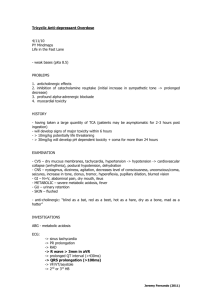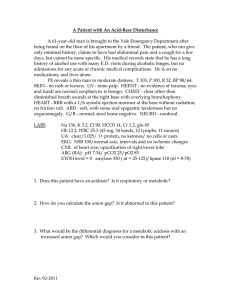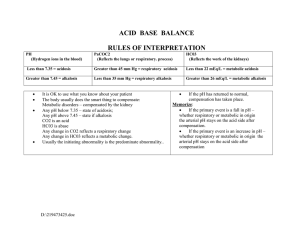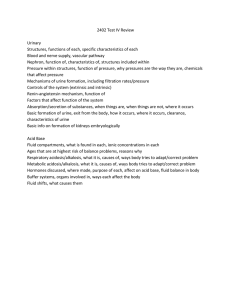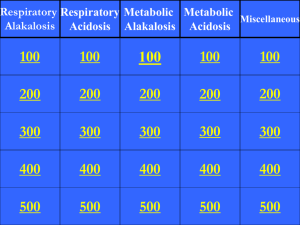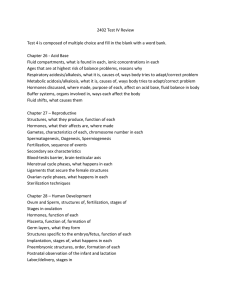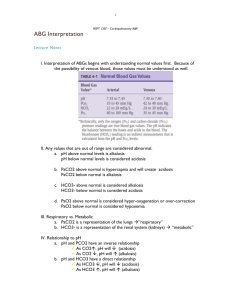Antipyretics and analgesics: The most common antipyretics and analgesics used are:
advertisement
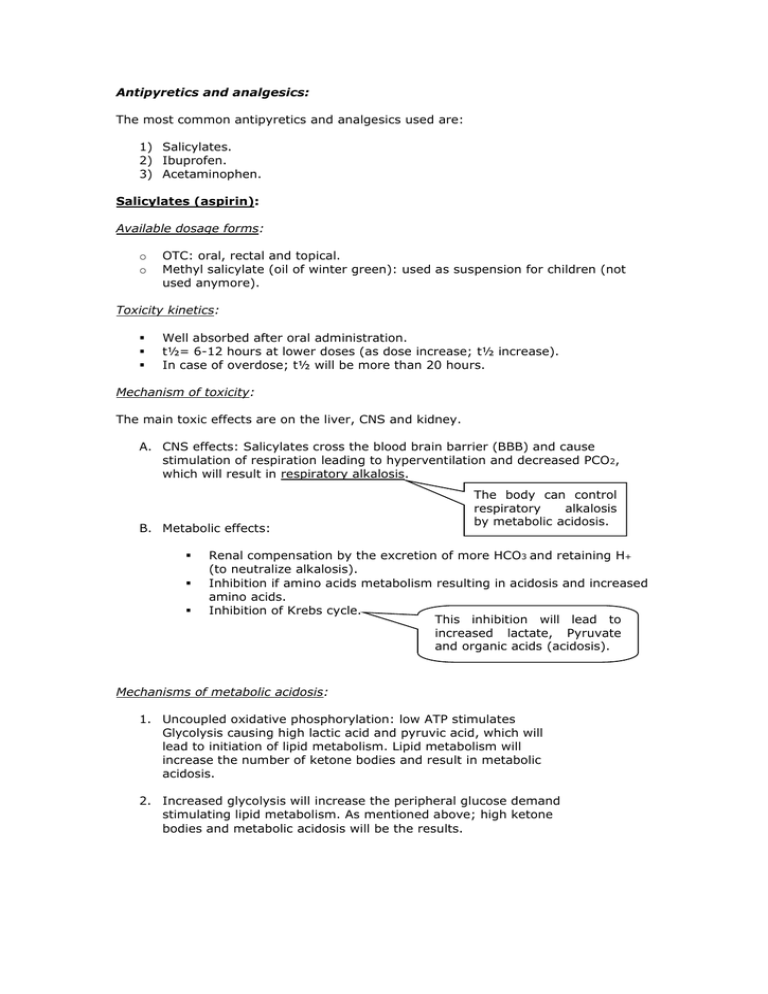
Antipyretics and analgesics: The most common antipyretics and analgesics used are: 1) Salicylates. 2) Ibuprofen. 3) Acetaminophen. Salicylates (aspirin): Available dosage forms: o o OTC: oral, rectal and topical. Methyl salicylate (oil of winter green): used as suspension for children (not used anymore). Toxicity kinetics: Well absorbed after oral administration. t½= 6-12 hours at lower doses (as dose increase; t½ increase). In case of overdose; t½ will be more than 20 hours. Mechanism of toxicity: The main toxic effects are on the liver, CNS and kidney. A. CNS effects: Salicylates cross the blood brain barrier (BBB) and cause stimulation of respiration leading to hyperventilation and decreased PCO2, which will result in respiratory alkalosis. B. Metabolic effects: The body can control respiratory alkalosis by metabolic acidosis. Renal compensation by the excretion of more HCO3 and retaining H+ (to neutralize alkalosis). Inhibition if amino acids metabolism resulting in acidosis and increased amino acids. Inhibition of Krebs cycle. This inhibition will lead to increased lactate, Pyruvate and organic acids (acidosis). Mechanisms of metabolic acidosis: 1. Uncoupled oxidative phosphorylation: low ATP stimulates Glycolysis causing high lactic acid and pyruvic acid, which will lead to initiation of lipid metabolism. Lipid metabolism will increase the number of ketone bodies and result in metabolic acidosis. 2. Increased glycolysis will increase the peripheral glucose demand stimulating lipid metabolism. As mentioned above; high ketone bodies and metabolic acidosis will be the results. Sings and symptoms: Mild toxicity (less than 30 tablets ingested): Nausea, vomiting, tinnitus and malaise. Tinnitus and malaise are a hallmark for Salicylates toxicity among other analgesics and antipyretics. Moderate toxicity (30-63 tablets ingested): Hyperthermia, sweating, dehydration and lethargy. Severe toxicity (63-105 tablets ingested): Metabolic acidosis, respiratory failure, pulmonary edema, cardiovascular collapse and convulsions. Lethal dose (more than 105 tablets ingested): Coma and death. Complications: Therapeutic and toxic doses may both result in the following complications: i. ii. iii. iv. G.I. bleeding. Hepatic toxicity. Pancreatitis. Protein urea. Management: 1) Decontamination by repetitive doses of activated charcoal every 6 hours with single dose of cathartic in patients who ingested more than 150 mg/kg. 2) Whole bowel irrigation for large ingestion. 3) IPECAC induced emesis is usually used for children. 4) Alkaline diuresis is used to increase salicylate excretion by Na bicarbonate, this method is used if the ingested quantity is more than 40 mg/dl. 5) Hemodialysis is used for severe intoxication; more than 100 mg/dl. (In case of severe intoxication; Hemodialysis is better than gastric lavage). 6) These patients are given fluids and electrolytes. 7) Vitamin K is given to correct the anti-platelet activity of aspirin or fresh frozen plasma. (?) What is the importance of gastric lavage? ► It's helpful due to delayed stomach emptying after ingestion of doses. It has a clotting factor and fibrinogen to reverse anti-coagulant activity of aspirin.
